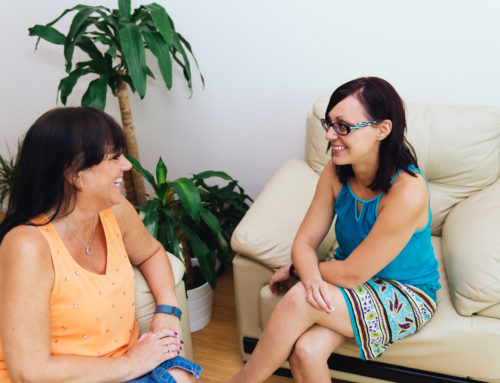What Is Diastases Recti?
During pregnancy, the growing uterus stretches the muscles in the abdomen. This can cause the two large parallel bands of muscles that meet in the middle of the abdomen to separate.
This abdominal muscle separation, so called diastasis recti, is very common in late pregnancy and affects about 1 in 3 mums.
The muscle separation often lessens after the birth however, a small widening of the middle line about 2 cm (occurs in about 70% of women) can remain up to a year after childbirth and beyond.
This is quite huge percentage and from my experience most of my friends and clients were not even aware of what it is or how to fix it.
Because of this very little known condition woman often end up making it even worse by incorporating wrong exercises into their fitness routine. Exercises which actually make the muscle separation even worse.
Signs of Distasis recti
- Back pain
- Bulging belly
- Mummy tummy even if you are back to your pre-pregnancy weight
- Poor posture
- Pelvic floor problems, gastro-intestinal disturbances like constipation and bloating
My Story with Diastases Recti
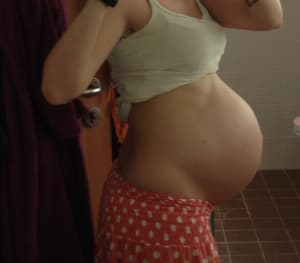
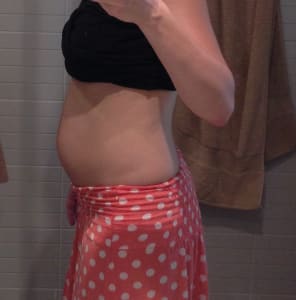 I was super fit when I was pregnant and just to illustrate better I was running my yoga classes until 40th Week. I felt great and I was almost all pregnancy symptoms free and put on a minimal weight only about 10 kg.
I was super fit when I was pregnant and just to illustrate better I was running my yoga classes until 40th Week. I felt great and I was almost all pregnancy symptoms free and put on a minimal weight only about 10 kg.
I was trained in postnatal yoga course all about diastasis recti and I still sort of refused to believe I would have DS too after my daughter’s birth.
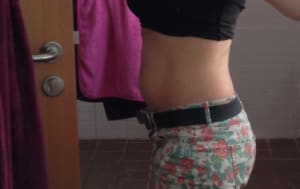
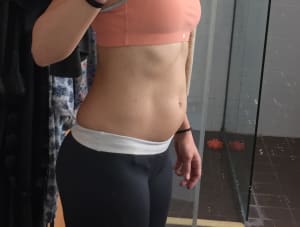 I knew exactly what to check for after Mili was born and to my big surprise I found out I had about 2-2.5 cm of abdominal split.
I knew exactly what to check for after Mili was born and to my big surprise I found out I had about 2-2.5 cm of abdominal split.
For about 10 months I was hoping it would fix on it’s own but it didn’t. I was back to my pre-pregnancy weight for a long time by then and my belly still looked like I was 4-5 months pregnant and whatever I did it didn’t get better.
When Emilia was 11 months I finally decided to do something about it and was determined to heal it as quickly as possible.
-
special corrective exercises
-
safe yoga poses
-
and low carb + high protein diet
My Diastasis recti was down to 0,5 cm. My belly got much stronger and looks definitely flatter and on top of it I am almost lower back pain free.
How can you quickly check for Diastasis Recti?
7 Easy Steps
- Lie down on your back with your knees bent.
- Place your middle three fingers in your belly button pointing in the direction of your toes.
- Relax your abdominal muscles and lift your head. If you are holding your abdominal muscles in as you check it will give you a false reading as this will make the diastasis appear smaller.
- Come up and down a few times so you can feel how the2 big parallel muscles in the middle of your belly work.
- Now start checking for the separation from your sternum (the bottom of your ribcage) and inspect the two muscle ridges in the middle line running all the way from the top through your belly bottom area to your pelvis. The larges separation usually occurs around the belly bottom.
- If you find any separation along the middle line the last thing to check for is the depth of the separation. Place your fingers pointing down toward your back. Usually it is about 1-2 cm.
Yes I have it so what now?
- If you DS is more then 2.5 cm (more then 3 fingers) please rather go and visit your doctor first to consult the next steps.
- If your DS is less then 3 fingers in most cases about 2 fingers, here are few tips to help you to heal your DS.
Exercises to avoid:
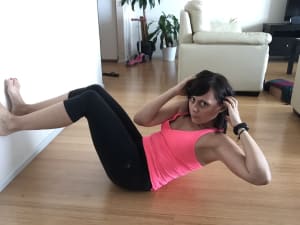 There are a number of important muscles you need to exercise (in the right way) to repair a diastasis, the most important of which is the transverse abdominis. This is the innermost abdominal muscle which runs right around your middle like a corset. Simply put if you do crunches or planks or back bends this kind of exercises only put excessive pressure on your abdomenus rectus which results in bulging or even further separation of those two ridges (the six pack) and making your DS in a long term worse. The mechanic of
There are a number of important muscles you need to exercise (in the right way) to repair a diastasis, the most important of which is the transverse abdominis. This is the innermost abdominal muscle which runs right around your middle like a corset. Simply put if you do crunches or planks or back bends this kind of exercises only put excessive pressure on your abdomenus rectus which results in bulging or even further separation of those two ridges (the six pack) and making your DS in a long term worse. The mechanic of
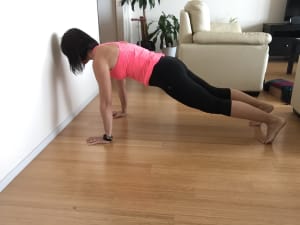 mummy tummy safe exercises involves lifting of the pelvic floor (engaging the abdominal transverse muscles) and zipping actions (in another words prepressing towards your back) of the abdomen rectus muscles. This is a simple magic behind it.
mummy tummy safe exercises involves lifting of the pelvic floor (engaging the abdominal transverse muscles) and zipping actions (in another words prepressing towards your back) of the abdomen rectus muscles. This is a simple magic behind it.
TO AVOID!
- Crunches and similar
- Planks and similar
- Upward dogs and all backbends in yoga
Few tips how to heal your DS:
- Correctly engage your core in everything you do
- Keep a good posture
- Do a special corrective exercises to help you to heal DS
- Incorporate healthy eating habits



